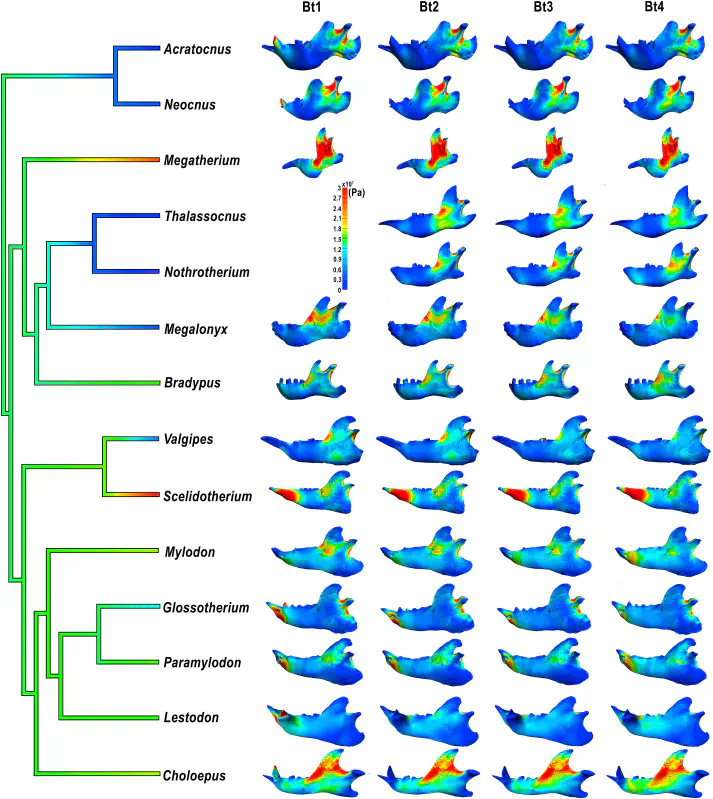3D finite element analysis and geometric morphometrics of sloths (Xenarthra, Folivora) mandibles show insights on the dietary specializations of fossil taxa

Abstract
Sloths are represented today only by two distantly-related small, arboreal, and folivorous genera. However, the fossil record of the clade is composed of many more taxa, with much more diverse morphologies, including giant terrestrial forms with no clear modern analogs. In this context, several approaches have been implemented in order to explore the ecological adaptations of fossil taxa and, in particular, their dietary preferences. In this work we used 3D Finite Elements Analysis (FEA) coupled with Geometric Morphometrics (GMM) to explore the ecomorphology of sloths and possible differences among taxa related to dietary adaptations. Digital models of the mandibles of 14 taxa were obtained (two extant and twelve extinct), representing members of all the major clades within the group. We modeled the actions of the three major muscles involved in mastication (masseter, temporalis, and pterygoideus) and simulated unilateral mastication in four different conditions, one for each tooth along the toothrow. The results were analyzed qualitatively regarding the distribution of von Mises stress (vMs) and quantitatively using the mesh-weighted arithmetic mean (MWAM) vMs, strain energy (SE), and mechanical efficiency (ME). Differences in the distribution of high-vMs areas and lower SE values were found among taxa predicted to be grazers in comparison to those predicted to be browsers. Furthermore, when simulating biting with the most anterior tooth, we observed considerably higher vMs and SE values in taxa with a caniniform, which could indicate its involvement in sexual display rather than in food processing, acquisition, or other strenuous activities.